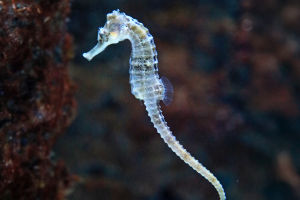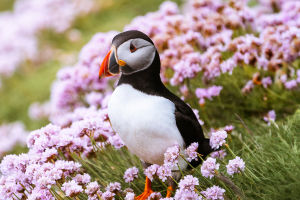Hi Lykkers! Oceanic dolphins are known for their remarkable intelligence and social behavior. These fascinating marine mammals live in complex societies, forming deep bonds that are essential for survival in their dynamic oceanic environment.
Dolphins exhibit a wide range of behaviors that highlight their cooperative nature, their love for play, and the strength of their social structures. Let’s find the intricacies of dolphin social life, from their close-knit family bonds to their playful interactions and cooperative hunting techniques!
1. Forming Strong Bonds
At the heart of dolphin society are the bonds they form with each other. Dolphins are highly social creatures that live in groups, or pods, which can range from a few individuals to over a hundred. These pods are typically composed of family members, but some dolphins form alliances outside their family groups. The bonds between dolphins are often lifelong, with mothers and calves staying close for years.
Dolphins communicate through a sophisticated range of vocalizations, including clicks, whistles, and body language. These signals help maintain relationships and convey emotions like affection and trust. Studies show that dolphins are capable of recognizing each other’s unique calls even after long periods of separation, underscoring the importance of these social ties.
2. Playful Behavior: The Heart of Dolphin Sociality
Dolphins are often seen engaging in playful behavior, which serves as more than just entertainment. Play is a vital part of dolphin life and plays a significant role in maintaining social bonds. Whether it’s tossing seaweed, surfing on waves, or interacting with other marine creatures, dolphins show an incredible sense of fun. This playful nature not only helps strengthen social ties but also aids in the development of cognitive and motor skills, particularly in younger dolphins.
Interestingly, dolphins have been observed engaging in play with other species, including humans. This cross-species interaction indicates a level of curiosity and social flexibility that sets dolphins apart from many other animals.
3. Cooperation in Hunting
One of the most impressive aspects of dolphin society is their ability to cooperate during hunting. Dolphins work together to catch fish or other prey, using advanced techniques that require synchronized efforts and communication. One notable strategy is the "fish herding" technique, where dolphins form tight circles around schools of fish, driving them toward the surface where they are easier to catch. In some cases, dolphins have been seen using tools like marine sponges to protect their snouts while foraging on the seafloor.
Some species, like the bottle-nose dolphin, have been observed cooperating with humans in certain fishing practices. In these rare instances, dolphins help fishermen by driving fish toward nets, and in return, they often receive a share of the catch. This mutualistic relationship showcases the dolphins' ability to understand and adapt to cooperative interactions with different species.
4. Social Structures and Hierarchy
Dolphin pods are not just random groupings of individuals; they have social structures and hierarchies that govern interactions. In many pods, there are dominant individuals, typically males, who lead the group and make decisions about movement and hunting. However, the social dynamics can be fluid, with individuals shifting roles depending on the situation. Younger dolphins, for instance, often form loose alliances or "gangs" within the pod, and these alliances can shift as they mature.
The social hierarchy is also influenced by factors like age, experience, and gender. Female dolphins often form tight maternal bonds, and their relationships with other females play a crucial role in the well-being of the group. These strong female-led connections are key to the stability and survival of the pod.
5. The Role of Communication in Social Interaction
Communication is the glue that holds dolphin societies together. Dolphins use a variety of vocalizations to convey messages, including signature whistles that identify individuals. These "names" allow dolphins to call and locate one another, even in large groups. Body language, such as leaping or tail-slapping, also plays a role in communication, signaling everything from aggression to playful intent.
Researchers have discovered that dolphins engage in complex vocal exchanges, similar to conversations, suggesting that their communication system may be far more advanced than previously thought. These vocal interactions help dolphins navigate their social structures, form alliances, and coordinate group activities.
The social lives of oceanic dolphins are incredibly sophisticated, driven by the need to form lasting bonds, cooperate for survival, and enjoy life through play. These animals exemplify the power of communication, the importance of social structure, and the value of cooperation in the wild. Understanding their behavior not only provides insight into the lives of these remarkable creatures but also highlights the complex social systems that exist beneath the ocean’s surface.
As we continue to study dolphins, we deepen our appreciation for their intelligence and the rich social lives they lead!
Dolphins: Nature’s Smartest Marine Mammals | Bottlenose Dolphin Intelligence
Video by ANIMAL ANTICS


